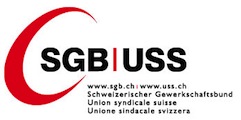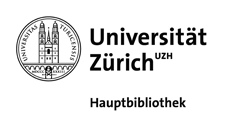Publications des institutions partenaires
Short-term temporal discounting of reward value in human ventral striatum
Delayed rewards lose their value for economic decisions and constitute weaker reinforcers for learning. Temporal discounting of reward value already occurs within a few seconds in animals, which allows investigations of the underlying neurophysiological mechanisms. However, it is difficult to relate these mechanisms to human discounting behavior, which is usually studied over days...
Institution partenaire
English / 01/01/2009
A parametric relief signal in human ventrolateral prefrontal cortex
People experience relief whenever outcomes are better than they would have been, had an alternative course of action been chosen. Here we investigated the neuronal basis of relief with functional resonance imaging in a choice task in which the outcome of the chosen option and that of the unchosen option were revealed sequentially. We found parametric activation increases in anterior...
Institution partenaire
English / 01/01/2009
Behavioral functions of dopamine neurons
This chapter reviews the extracellular studies of dopamine neurons in behaving animals. Topics covered include motor functions of dopamine neurons, reward functions of dopamine neurons, reward learning functions of dopamine neurons, economic value functions of dopamine neurons, and attention and novelty functions of dopamine neurons.
Institution partenaire
English / 01/01/2009
Electrophysiological correlates of reward processing in dopamine neurons
Institution partenaire
English / 01/01/2009
The NimStim set of facial expressions: judgments from untrained research participants
A set of face stimuli called the NimStim Set of Facial Expressions is described. The goal in creating this set was to provide facial expressions that untrained individuals, characteristic of research participants, would recognize. This set is large in number, multiracial, and available to the scientific community online. The results of psychometric evaluations of these stimuli are...
Institution partenaire
English / 01/01/2009
Self-control in decision-making involves modulation of the vmPFC valuation system
Every day, individuals make dozens of choices between an alternative with higher overall value and a more tempting but ultimately inferior option. Optimal decision-making requires self-control. We propose two hypotheses about the neurobiology of self-control: (i) Goal-directed decisions have their basis in a common value signal encoded in ventromedial prefrontal cortex (vmPFC), and (...
Institution partenaire
English / 01/01/2009
The bivalent side of the nucleus accumbens
An increasing body of evidence suggests that the nucleus accumbens (NAcc) is engaged in both incentive reward processes and in adaptive responses to conditioned and unconditioned aversive stimuli. Yet, it has been argued that NAcc activation to aversive stimuli may be a consequence of the rewarding effects of their termination, i.e., relief. To address this question we used fMRI to...
Institution partenaire
English / 01/01/2009
Odor quality coding and categorization in human posterior piriform cortex
Efficient recognition of odorous objects universally shapes animal behavior and is crucial for survival. To distinguish kin from nonkin, mate from nonmate and food from nonfood, organisms must be able to create meaningful perceptual representations of odor qualities and categories. It is currently unknown where and in what form the brain encodes information about odor quality. By...
Institution partenaire
English / 01/01/2009
Corporate venture capital, disembodied experimentation and capability development
Studies invoking a capabilities lens often ascribe deliberateness in organizational decisions to develop new capabilities. Drawing on five longitudinal case studies of large, global firms in the information and communication technology sector, we examine how firms engender cognizance of their future capability needs in situations characterized by high decision-making uncertainty. We...
Institution partenaire
English / 01/01/2009
Exploration, exploitation, and financial performance: analysis of S&P 500 corporations
The literature suggests that established firms need to balance their exploration and exploitation activities in order to achieve superior performance. Yet, previous empirical research has modeled this balance as the interaction of orthogonal activities. In this study, we show that there is a trade-off between exploration and exploitation and that the optimal balance between...
Institution partenaire
English / 01/01/2009
Gems from the ashes: Capability creation and transformation in internal corporate venturing
Our longitudinal study of the entire population of internal corporate ventures within a large European electronics manufacturer finds that the conventional focus in the corporate venturing literature to evaluate ventures based on business growth and financial performance may be misguided. Instead, we found that ventures are temporary conduits for capability development and play a...
Institution partenaire
English / 01/01/2009
Tax incentives for inefficient executive pay and reward for luck
Institution partenaire
English / 01/01/2009
Tax incentives for inefficient executive pay and reward for luck
Institution partenaire
English / 01/01/2009
Optimal impairment rules
We study the optimal accounting policy of a financially constrained firm that pledges assets to raise debt capital for financing a risky project. The accounting system provides information about the value of the collateral. Absent accounting regulation, the optimal accounting system is conditionally conservative: it recognizes an impairment loss if the asset value is below a certain...
Institution partenaire
English / 01/01/2009
Optimal impairment rules
We study the optimal accounting policy of a financially constrained firm that pledges assets to raise debt capital for financing a risky project. The accounting system provides information about the value of the collateral. Absent accounting regulation, the optimal accounting system is conditionally conservative: it recognizes an impairment loss if the asset value is below a certain...
Institution partenaire
English / 01/01/2009
Introduction: Globalization as a challenge for business responsibilities
Institution partenaire
English / 01/01/2009
Curve Medicine - A New Perspective on the Production of Health
Health economists have studied the determinants of the expected value of health status as a function of medical and nonmedical inputs, often finding small marginal effects of the former. This paper argues that both types of input have an additional benefit, viz. a reduced variability of health status. Using OECD health data for 24 countries between 1960 and 2004, medical and...
Institution partenaire
English / 01/01/2009
Pay-what-you-want - a new participative pricing mechanism
Pay what you want (PWYW) is a new participative pricing mechanism in which consumers have maximum control over the price they pay. Previous research has suggested that participative pricing increases consumers' intent to purchase. However, sellers using PWYW face the risk that consumers will exploit their control and pay nothing at all or a price below the seller's costs....
Institution partenaire
English / 01/01/2009
Pages
Le portail de l'information économique suisse
© 2016 Infonet Economy












